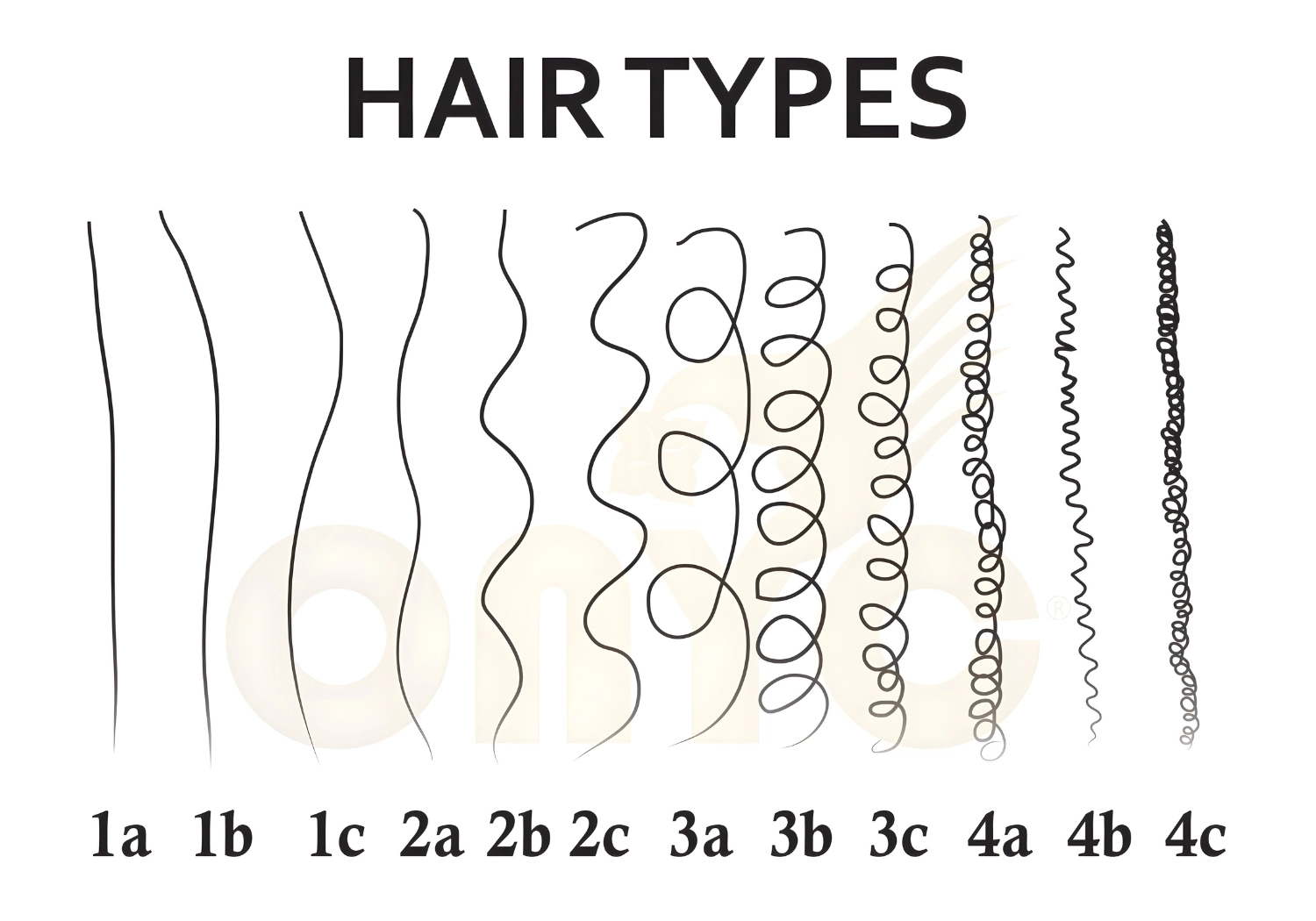What is Hair Type?
Your hair type refers to the natural texture and structure of your hair, which is determined by the shape of your hair follicle, hair shaft, and hair cuticle. It’s a way to classify hair based on its unique characteristics, such as curl pattern, texture, and porosity. Understanding your hair type helps you choose the right products, styling tools, and techniques to achieve healthy, beautiful hair.
Identifying Your Hair Type
Hair types are generally categorized into four main groups: straight, wavy, curly, and kinky. Each type has its unique characteristics, and understanding yours will help you make informed styling decisions.
Straight Hair
- Characteristics: Straight hair lies flat against the head, with no natural curl or wave.
- Subtypes:
- Fine: Thin, light, and easily damaged.
- Medium: Smooth, shiny, and manageable.
- Coarse: Thick, dense, and prone to frizz.
Wavy Hair
- Characteristics: Wavy hair has a gentle, flowing “S” shape.
- Subtypes:
- Loose: Easy to style, with a relaxed wave pattern.
- Tight: More defined waves, prone to frizz.
Curly Hair
- Characteristics: Curly hair has a defined “S” shape, with a more pronounced curl pattern.
- Subtypes:
- Loose: Soft, bouncy curls.
- Tight: Dense, spiral curls.
Kinky Hair
- Characteristics: Kinky hair has a zig-zag or tightly coiled pattern.
- Subtypes:
- Loose: Soft, flexible coils.
- Tight: Dense, fragile coils.
Porosity and Density: Understanding the Impact on Your Hair
Porosity
Hair porosity refers to how well your hair absorbs and retains moisture. There are three levels of porosity:
- Low Porosity: Hair has a compact cuticle layer, making it difficult for moisture to penetrate.
- Medium Porosity: Hair has a balanced cuticle layer, allowing for moderate moisture absorption.
- High Porosity: Hair has a raised cuticle layer, making it prone to excessive moisture loss.
Density
Hair density refers to the number of hair strands per square inch of scalp. There are three levels of density:
- Low Density: Fine or thin hair with a lot of space between strands.
- Medium Density: Medium-textured hair with a moderate number of strands.
- High Density: Coarse or thick hair with a high number of strands.
How Porosity and Density Affect Your Hair
- Product Absorption: Hair with low porosity may struggle to absorb products, while high porosity hair may absorb too much.
- Moisture Retention: Hair with low porosity may retain moisture poorly, while high porosity hair may lose moisture quickly.
- Styling: Hair with low density may lack volume, while high density hair may be prone to tangling.
- Breakage: Hair with high porosity and low density may be more prone to breakage.
Styling Your Hair Type
Once you’ve identified your hair type, porosity, and density, it’s time to find the right styling products and techniques.
Straight Hair
- Use lightweight products to avoid weighing your hair down.
- Add volume with a texturizing spray or dry shampoo.
- Avoid heavy styling tools, opting for a round brush and blow dryer instead.
Wavy Hair
- Enhance natural texture with a sea salt spray or texturizing cream.
- Use a diffuser to define waves and reduce frizz.
- Apply a lightweight serum to tame flyaways.
Curly Hair
- Moisturize with a rich, sulfate-free shampoo and conditioner.
- Define curls with a curl activator or styling cream.
- Use a microfiber towel or old t-shirt to gently blot excess water.
Kinky Hair
- Nourish with a hydrating mask and leave-in conditioner.
- Define coils with a styling cream or pomade.
- Protect hair from heat damage with a heat protectant spray.
Conclusion
Understanding your hair type, porosity, and density is crucial to finding the right products and techniques for healthy, beautiful hair. By embracing your hair’s unique characteristics, you’ll be on your way to achieving gorgeous locks that make you feel confident and beautiful. Happy styling!
